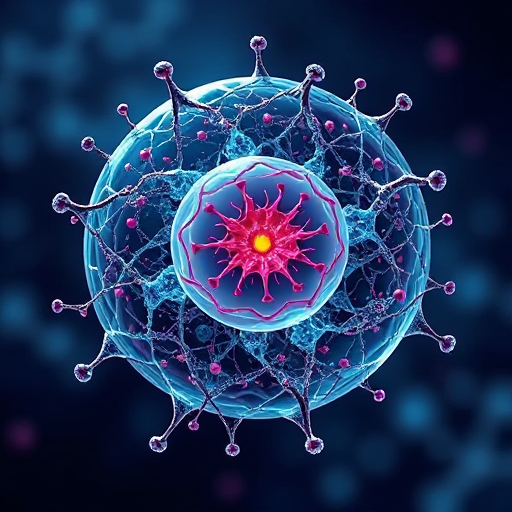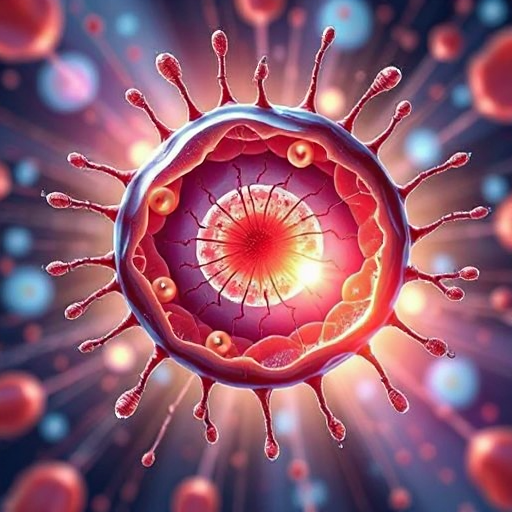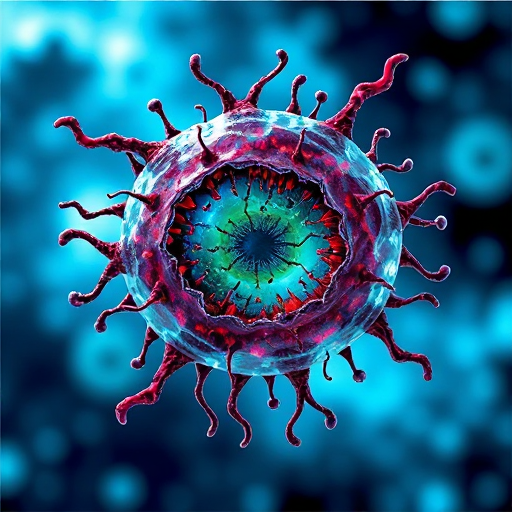What Are Phyllodes Tumors and Their Key Characteristics

Phyllodes tumors are rare fibroepithelial breast tumors that can be benign, borderline, or malignant. These tumors grow quickly and often feel firm with a fibrous texture. Under a microscope, they display a unique leaf-like pattern. They account for less than 1% of all breast tumors, making them much rarer than fibroadenomas, the most common type of breast mass. While phyllodes tumors typically affect women in their 40s, they can occur at any age. Younger women are more likely to develop benign forms, while malignant cases are less common.
Key Takeaways
Phyllodes tumors are rare breast growths. They can be harmless, in-between, or cancerous. These tumors grow fast and might come back, so they need close watching.
Look for signs like a fast-growing lump or skin changes. Finding them early helps with better treatment.
Surgery is the main way to treat phyllodes tumors. Removing all of the tumor lowers the chance of it returning.
After treatment, regular check-ups are very important. Visit your doctor every six months for the first two years to check for any new problems.
If you see any strange changes in your breasts, talk to a doctor right away. Early checks can help you feel better and stay healthy.
What Are Phyllodes Tumors?

Definition and Overview
Phyllodes tumors are rare breast growths that develop in the connective tissue of the breast. Unlike more common breast tumors, such as fibroadenomas, these tumors grow rapidly and can vary in behavior. They may be benign, borderline, or malignant, depending on their cellular characteristics. Despite their rarity, they require careful attention due to their potential for recurrence and, in some cases, their ability to spread to other parts of the body.
How Phyllodes Tumors Differ from Other Breast Tumors
Phyllodes tumors stand out because of their faster growth rate and unique structure. While fibroadenomas grow slowly and typically affect younger women in their 20s or 30s, phyllodes tumors grow quickly and are more common in women in their 40s. The table below highlights these differences:
Tumor Type | Growth Rate | Typical Age of Development |
|---|---|---|
Phyllodes Tumors | Faster | 40s |
Fibroadenomas | Slower | 20s-30s |
Another key difference lies in their microscopic appearance. Phyllodes tumors have a distinctive leaf-like pattern, which sets them apart from other breast tumors. However, their rapid growth can sometimes lead to confusion with other conditions, making accurate diagnosis essential.
Types of Phyllodes Tumors
Phyllodes tumors fall into three categories based on their cellular makeup and behavior:
Benign
Benign phyllodes tumors are the most common type. They grow quickly but do not invade surrounding tissues. These tumors are noncancerous and have an excellent prognosis when removed surgically.
Borderline
Borderline phyllodes tumors show characteristics between benign and malignant forms. They may grow aggressively and have a moderate risk of recurrence. Close monitoring after treatment is crucial to ensure they do not return.
Malignant
Malignant phyllodes tumors are less common, accounting for about 10% of cases. These tumors can invade nearby tissues and, in rare instances, spread to other parts of the body. Early detection and treatment improve outcomes for this type.
Note: Phyllodes tumors represent only 0.3 to 1% of all breast tumors. While most are noncancerous, their rapid growth and potential for malignancy highlight the importance of timely medical evaluation.
Symptoms of Phyllodes Tumors
Physical Signs
Rapidly Growing Lump
One of the most noticeable signs of a phyllodes tumor is a rapidly growing lump in the breast. You may observe this lump increasing in size over weeks or months, often reaching several centimeters in diameter. These lumps are typically firm, well-defined, and mobile, meaning they can move slightly under the skin when touched. Despite their size, they are usually painless. In some cases, the lump may stretch the skin, causing it to appear shiny or translucent. Veins over the lump may become more visible, giving the skin a bluish or greenish tint.
Smooth, Firm, and Mobile Mass
Phyllodes tumors often feel smooth and firm to the touch. You might notice that the mass is easy to distinguish from the surrounding breast tissue due to its well-circumscribed edges. These lumps are mobile, meaning they are not fixed to the chest wall or skin. This mobility can help differentiate them from other types of breast tumors.
Skin Changes (Shiny or Stretched Appearance)
As the tumor grows, it can cause noticeable changes to the skin over the lump. The skin may stretch, becoming shiny or taut. In some cases, the skin may appear red or irritated. Large tumors can even distort the breast's shape or cause bulging. Although rare, very large tumors might lead to ulceration or involve the nipple-areola complex.
When to Seek Medical Attention
You should consult a healthcare provider if you notice a rapidly growing lump in your breast or any unusual changes in its appearance. Early evaluation is crucial, especially if the lump feels firm, mobile, or causes visible skin changes. While most breast lumps are benign, a timely diagnosis can help determine the appropriate treatment and improve outcomes.
Causes and Risk Factors
Unknown Etiology
The exact cause of a phyllodes tumor remains unclear. Researchers have yet to identify a specific trigger for its development. Unlike other breast tumors, phyllodes tumors do not seem to be linked to common risk factors like hormonal changes or lifestyle habits. This lack of clarity makes it essential to focus on early detection and monitoring.
Potential Risk Factors
Age and Gender (Most Common in Women Aged 40–50)
Phyllodes tumors primarily affect women between the ages of 40 and 50. You are more likely to encounter this condition during this stage of life compared to younger or older age groups. While rare, these tumors can also occur in men, though this is extremely uncommon. If you fall within this age range, staying vigilant about breast health is crucial.
Genetic or Hormonal Links (Limited Evidence but Possible Associations)
Although the cause remains unknown, researchers have explored potential genetic and hormonal factors. Studies suggest that specific genetic mutations may play a role in the development of phyllodes tumors. For example:
Identical MED12 mutations have been found in both fibroadenomas and phyllodes tumors, hinting at a shared origin.
These mutations are more common in benign fibroepithelial lesions than in malignant phyllodes tumors, suggesting a progression pathway.
Some scientists hypothesize that benign fibroadenomas could evolve into phyllodes tumors, with TERT genetic alterations driving malignant changes.
While these findings are promising, they remain inconclusive. Hormonal influences have also been considered, but no definitive link has been established. You should consult a healthcare provider if you notice unusual breast changes, especially if you have a history of fibroadenomas.
How Are Phyllodes Tumors Diagnosed?
Accurate diagnosis of a phyllodes tumor involves a combination of clinical evaluation, imaging techniques, and biopsy procedures. These steps help your healthcare provider determine the tumor type and guide appropriate treatment.
Clinical Examination
Your doctor will begin with a physical examination of the breast. They will assess the size, shape, and mobility of the lump. Phyllodes tumors often feel smooth, firm, and mobile under the skin. During this exam, your doctor may also check for skin changes, such as stretching or redness, which can indicate a rapidly growing mass. While a clinical examination provides initial insights, further testing is essential for confirmation.
Imaging Techniques
Imaging plays a crucial role in identifying phyllodes tumors and distinguishing them from other breast masses.
Mammogram
A mammogram uses X-rays to capture detailed images of the breast. It can reveal the size and location of the tumor. However, mammograms may not always differentiate between phyllodes tumors and other conditions like fibroadenomas. This limitation makes additional imaging necessary in many cases.
Ultrasound
Ultrasound uses sound waves to create images of the breast tissue. It is particularly useful for evaluating the internal structure of the tumor. Advanced techniques, such as deep-learning models, have significantly improved the accuracy of ultrasound in distinguishing phyllodes tumors from fibroadenomas. For example, recent studies highlight how artificial intelligence enhances diagnostic precision, outperforming traditional methods.
Study Title | Key Findings |
|---|---|
Differential diagnosis between small breast phyllodes tumors and fibroadenomas using artificial intelligence and ultrasound data | AI improves ultrasound accuracy in differentiating tumor types. |
Differentiation between Phyllodes Tumors and Fibroadenomas through Breast Ultrasound: Deep-Learning Model Outperforms Ultrasound Physicians | Deep-learning models surpass traditional ultrasound techniques. |
Magnetic resonance imaging (MRI) is another advanced tool. It offers high sensitivity and specificity for breast diseases. However, conventional MRI findings for benign and malignant phyllodes tumors often overlap. Texture analysis in MRI has emerged as a promising method to improve diagnostic accuracy.
Study Title | Key Findings |
|---|---|
Value of conventional magnetic resonance imaging texture analysis in the differential diagnosis of benign and borderline/malignant phyllodes tumors | Texture analysis enhances MRI's ability to differentiate tumor types. |
Biopsy for Confirmation
A biopsy is the most definitive way to diagnose a phyllodes tumor. It involves removing a sample of tissue for microscopic examination.
Core Needle Biopsy
In this procedure, your doctor uses a hollow needle to extract a small tissue sample. It is minimally invasive and provides valuable information about the tumor's cellular structure. However, core needle biopsy may sometimes miss areas of the tumor that indicate malignancy.
Surgical Biopsy
If the core needle biopsy results are inconclusive, your doctor may recommend a surgical biopsy. This involves removing a larger portion or the entire tumor for analysis. Surgical biopsy offers a more comprehensive evaluation, ensuring an accurate diagnosis.
Tip: Early diagnosis through imaging and biopsy can help you receive timely treatment and improve your prognosis.
Treatment Options for Phyllodes Tumors

Surgical Approaches
Lumpectomy (Wide Local Excision)
A lumpectomy, also known as wide local excision, involves removing the tumor along with a margin of healthy tissue. This procedure is often the first choice for smaller phyllodes tumors. It helps prevent recurrence by ensuring no tumor cells remain. The success of a lumpectomy depends on the tumor size. For tumors under 2 cm, the 5-year local control rate is 91%. However, this rate drops to 59% for tumors between 5 and 10 cm.
Procedure | Tumor Size (cm) | 5-Year Local Control Rate (%) |
|---|---|---|
Lumpectomy | 0-2 | 91 |
Lumpectomy | 2-5 | 85 |
Lumpectomy | 5-10 | 59 |
Mastectomy (For Larger or Malignant Tumors)
For larger or malignant phyllodes tumors, a mastectomy may be necessary. This procedure removes the entire breast to ensure complete tumor removal. Mastectomy offers higher success rates, especially for larger tumors. For example, the 5-year local control rate for tumors over 10 cm is 85%, compared to 59% for lumpectomy.
Procedure | Tumor Size (cm) | 5-Year Local Control Rate (%) |
|---|---|---|
Mastectomy | 0-2 | 100 |
Mastectomy | 2-5 | 95 |
Mastectomy | 5-10 | 88 |
Mastectomy | 10-20 | 85 |
Non-Surgical Options
Radiation Therapy (For Malignant or Recurrent Tumors)
Radiation therapy is not commonly used for phyllodes tumors. Surgery remains the most effective treatment. However, radiation may be recommended for malignant or recurrent tumors when surgical margins are unclear. It helps reduce the risk of recurrence but is less effective than surgery for controlling tumor growth.
Chemotherapy (Rarely Used, Only for Advanced Malignant Cases)
Chemotherapy is rarely effective for phyllodes tumors. It is typically reserved for advanced malignant cases with distant metastases. Studies show no significant difference in recurrence or metastasis rates between patients who receive chemotherapy and those who do not. For example, 73% of local recurrences occur within two years, regardless of chemotherapy use. Most distant metastases affect the lungs, followed by the bones, liver, and adrenal glands.
Follow-Up Care and Monitoring
After treatment, regular follow-up care is essential to monitor for recurrence. You should schedule check-ups every six months for the first two years, as the risk of recurrence is highest during this period. Afterward, annual check-ups are recommended. These visits typically include physical breast exams and imaging tests like mammograms. If abnormalities are detected, additional tests such as ultrasounds, MRIs, or biopsies may be necessary. For malignant cases, CT scans may help detect distant metastases.
Tip: Learning how to perform self-examinations can help you detect any changes early. Discuss this with your healthcare provider during follow-up visits.
Prognosis and Outlook
Prognosis by Tumor Type
Benign Tumors (Excellent Prognosis)
Benign phyllodes tumors have an excellent prognosis. These tumors rarely recur after complete surgical removal. The local recurrence rate for benign tumors is approximately 8%, which is significantly lower than other types. With proper treatment, you can expect a high likelihood of long-term recovery.
Borderline Tumors (Moderate Risk of Recurrence)
Borderline phyllodes tumors carry a moderate risk of recurrence. About 13% of these tumors return after treatment. While they are less aggressive than malignant tumors, close monitoring is essential to detect any changes early. Surgical resection with clear margins improves outcomes significantly.
Malignant Tumors (Higher Risk of Recurrence and Metastasis)
Malignant phyllodes tumors pose the highest risk of recurrence and metastasis. The local recurrence rate is around 18%, and these tumors often recur earlier than benign or borderline types. Factors like tumor classification and surgical margins play a critical role in determining your prognosis.
Factor | Description |
|---|---|
Histotype | Tumor classification (benign, borderline, or malignant) affects prognosis. |
Surgical Resection | Adequate margins during surgery reduce recurrence risk. |
Risk of Recurrence
Phyllodes tumors have an average recurrence rate of 15%, though this can range from 10% to 40%. Malignant tumors are more likely to recur and may spread to distant organs, such as the lungs or bones. Locoregional recurrences are common, with surgical excision being the primary treatment. For metastatic cases, chemotherapy is often recommended.
Recurrence Type | Description |
|---|---|
Locoregional Recurrence | 31.8% of patients experience recurrence in the same area. |
Distant Metastases | 78.8% of metastatic cases involve organs like the lungs and bones. |
Treatment Approaches | Surgery is preferred for local recurrence; chemotherapy is used for metastases. |
Long-Term Outlook
The long-term outlook for phyllodes tumors depends on their type. Benign tumors have a 5-year survival rate of 95.7%, while malignant tumors have a lower rate of 66.1%. Patients with distant metastases face a more challenging prognosis, with a 5-year survival rate of only 18.2%. Early detection and complete surgical removal improve your chances of a favorable outcome.
Tumor Type | 5-Year Survival Rate (%) |
|---|---|
Benign | 95.7 |
Borderline | 73.7 |
Malignant | 66.1 |
Tip: Regular follow-ups and imaging tests can help detect recurrences early, improving your long-term survival.
Phyllodes tumors are rare but require your attention due to their rapid growth and potential for recurrence. Recognizing symptoms like a rapidly growing lump or skin changes can lead to early diagnosis, which improves outcomes. Early surgical removal is crucial to prevent complications. Doctors recommend removing at least 1 cm of surrounding tissue to reduce the risk of regrowth. Even benign tumors need treatment to avoid further issues. If you notice unusual breast changes, consult a healthcare provider promptly. Taking action early ensures better management and peace of mind.
FAQ
What makes phyllodes tumors different from fibroadenomas?
Phyllodes tumors grow faster and larger than fibroadenomas. They also have a unique leaf-like microscopic pattern. While fibroadenomas are always benign, phyllodes tumors can be benign, borderline, or malignant. You should consult a doctor if you notice rapid growth in a breast lump.
Can phyllodes tumors spread to other parts of the body?
Malignant phyllodes tumors can spread, though this is rare. They most commonly metastasize to the lungs, bones, or liver. Early detection and complete surgical removal reduce the risk of metastasis. Regular follow-ups help monitor for any signs of spread.
Are phyllodes tumors painful?
Most phyllodes tumors are painless. However, their rapid growth may stretch the skin, causing discomfort or visible changes. If you experience pain or notice unusual breast changes, seek medical advice promptly for evaluation.
How can you reduce the risk of recurrence after treatment?
Surgical removal with clear margins is the best way to lower recurrence risk. Follow-up care, including regular imaging and physical exams, is essential. You should also monitor for any new lumps or changes in the treated area.
Do men get phyllodes tumors?
Phyllodes tumors are extremely rare in men. They primarily affect women aged 40–50. If you are a man and notice a breast lump, consult a healthcare provider to rule out other conditions, such as gynecomastia or male breast cancer.
Tip: Always report any unusual breast changes to your doctor, regardless of your gender or age. Early evaluation improves outcomes.
See Also
Key Features and Insights About Craniopharyngioma Explained
Exploring Fibrosarcoma: Essential Traits and Information
Essential Characteristics and Overview of Hemangioblastoma
Key Traits and Insights Into Glioblastoma Explained
Identifying Symptoms of Invasive Lobular Carcinoma Explained
